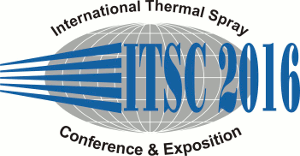
|
4765 |
|
Thursday, May 12, 2016, Room 3E 12:20 PM Corrosion Protection |
|
High-temperature protective performance of LT-HVOF sprayed TiAl3-Al coating for Ti-6Al-4V alloy substrate |
|
ChunMing Deng* / Guangdong Institute of New Materials, P.R. China Min Liu / National Engineering Lab for Modern Materials Surface Engineering Technology, P.R.China Wenpu Yang/ Guangzhou Research Institute of Non-ferrous Metals, P.R.China Jifu Zhang/ Guangzhou Research Institute of Non-ferrous Metals, P.R.China Changguang Deng/ Guangdong Provincial Key Lab for Modern Materials Surface Engineering Technology, P.R.China Kesong Zhou/ National Engineering Lab for Modern Materials Surface Engineering Technology, P.R.China |
|
Ti alloys are found wide applications as important structural materials in aviation, aerospace and chemical industry for the high specific strength and excellent corrosion resistance performance. However these applications are only restricted at low temperature because of the bad oxidation resistance performance at over 300 oC and the great degradation of mechanical strength at high temperature. Protective coatings are needed in order to improve the service temperature of Ti alloys. Conventional protective MCrAlY coating leads to great degradation of mechanical strength due to the co-diffusion of metallic clement. TiAl3 intermetallic is considered as ideal oxidation resistant coating for Ti-6Al-4V because of the similar chemical composition. Unfortunately as an intermetallic material, TiAl3 is a very brittle material, and metallic material is added to increase the toughness of the coating. In this paper, TiAl3-Al composite coating is prepared on Ti-6Al-4V substrate via Low temperature HVOF process, the microstructure and phase composition for as sprayed coating is analyzed by means of SEM, XRD. Finally the oxidation resistance of LT-HVOF sprayed TiAl3-Al on Ti-6Al-4V substrate is characterized at 700 oC, and the protective mechanism of the coating is discussed in this paper. |